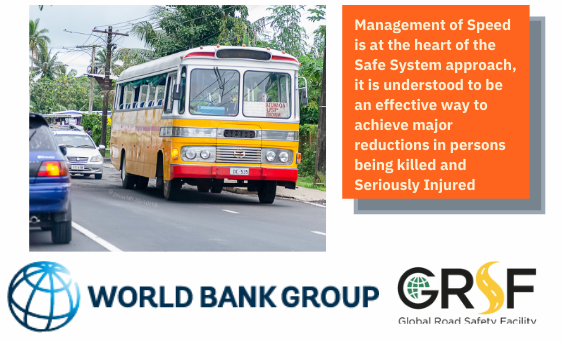Project background
TRL has developed a Speed Management and Assessment Tool (SMAT) which primarily requires iRAP coding data. It has been
developed for and tested with National Highways in the UK.
Speed management is acknowledged as critical to the UN road safety Sustainable Development Goals (SDGs) and to the Second Decade of Action for Road Safety 2030 reduction target. However, effective management of speed is difficult to achieve, practically in Low and Middle-Income Countries (LMIC's), due to data and resource constraints.
iRAP Star Rating does not help users to systematically manage speed across networks and at specific stretches. However, speed is a vital element in the Star Rating model for calculating the infrastructure-related Star Risk. The SMAT takes the iRAP coding data and repurposes it to help stakeholders with the People and Speed pillars. The tool assists stakeholders to manage speed in robust ‘intelligence-led’ ways anywhere that iRAP Star Rating has been applied, without the need for additional major data collection.
This project intends to verify the SMAT tool’s efficacy in LMICs and provide methodologies for the evaluation and management of speed to be simply embedded into countries’ road safety operations. iRAP Star Rating has been applied to over 1.5 million kilometres of road to date, many of this in LMICs. The SMAT may be a way to assist LMICs to manage speed effectively, potentially saving many lives and serious injuries globally.
Objectives
- Demonstrate how existing iRAP data can be used within the Speed Management Tool to effectively manage speed in a range of LMICs.
- Investigate any additional data collection that may be required to improve the effectiveness of the tool in LMICs.
- Build on the tool application in the trial LMICs to develop general measures and approaches that can be practically applied to successfully manage speed in other countries.
- Construct a framework for effective deployment of these speed management methodologies in a consistent, repeatable, and scalable way for LMICs
The methodology developed can then be applied across a wide range of LMICs to achieve reductions in the numbers of people
killed and seriously injured.
Scope and approach
- iRAP Star Rating: focusing on countries that are reported to have applied iRAP Star Rating recently.
- Identifying cost-effective and accurate additional data sources available in LMICs – speed and traffic flow data. These will be derived from road and transport authorities, local stakeholders and new digital sources.
- iRAP code data downloaded from the ViDA website for use on SMAT. We have the complete engagement of iRAP and they have assisted us to identify the trial countries chosen.
- Crash data may enhance the tool - Ghana and Fiji use TRL’s MAAP/iMAAP crash data systems.
- The data sources will be combined and processed in an SQL server dataset that is already set up. The SMAT front end (developed in) will then be linked to the SQL Server and the data for different countries will be output and analysed.
This project is funded by the Global Road Safety Facility of the World Bank Group.

